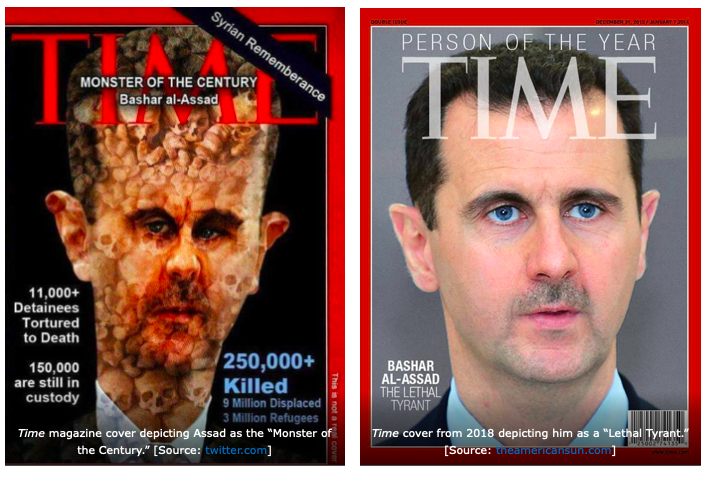All Global Research articles can be read in 51 languages by activating the “Translate Website” drop down menu on the top banner of our home page (Desktop version).
Visit and follow us on Instagram at @crg_globalresearch.
***
I was fortunate enough to be in Afghanistan in November of 1978, six months after a progressive socialist government came to power. I travelled from the city of Peshawar in Pakistan through the Khyber Pass to Kabul. I then spent a couple of weeks in the city and the surrounding rural area. At that time I was on a sabbatical leave as a professor from the University of Winnipeg. Prior to this, I had been in Asia for 7 months on an agricultural research project, conducting documentary case studies of farms — 70 studies in 12 countries, starting in Japan and ending with 4 farms in Afghanistan.
What I find astounding is that the Western media never mention that for a brief period of time Afghanistan once had a progressive secular government, with broad popular support.
This government had enacted progressive reforms and gave equal rights to women. It was in the process of dragging the country into the 20th century. In fact, British political scientist Fred Halliday stated in May 1979 that probably more had changed in the countryside over the previous year than in the two centuries since the state was established. Indeed, it would now be the type of government that most people in Afghanistan and the West would probably welcome. What happened to this government?
Long before the Soviet Union entered the scene, this government was undermined by the actions of the USA. It was the USA’s Central Intelligence Agency, the CIA, that created the mujahideen, which triggered a series of tragic events that destroyed the country. Following this, the US military invaded Afghanistan in October 2001 and stayed there for the next 20 years, pulling out just a few weeks ago. So in effect, it was the USA that created the present chaos and tragedy in Afghanistan.
Although the Afghan government in 1978 had come to power by means of revolution, surprisingly, it was a peaceful time, and I received full cooperation from government authorities and the Faculty of Agriculture at Kabul University. While at the University, the Dean and a number of professors briefed me on Afghanistan’s history, its economic conditions, and the causes of the revolution.
I still recall vividly that when I entered the Dean’s office, he was sitting at his desk, nicely dressed in a suit and tie. I began by telling him that I was on an agricultural research project in Asia but just as I left Canada at the beginning of May, I had heard that a few days before, there was a revolution in Afghanistan. And because of that I was wondering if I’d be able to do any research in the country. He pushed back his chair, and in flawless English with a British accent he said, “Revolution … just a day and a half, you know, April 27 and 28. I was there much of the time … I saw most of it … I’ll tell you about it. But first let me order some tea and I’ll get some faculty members to join us.”
For the next hour or more, he related what happened. According to the Dean and the professors, the bulk of Afghanistan’s people in the 1970s were farmers, but the landholding system hadn’t changed much since the feudal period. They told me that more than three-quarters of the land was owned by landlords and mullahs who composed only 3 percent of the rural population. Peasants who had owned land and homes lost both to landlords and mullahs because they were unable repay their loans, so now they worked the land as sharecroppers . . . land that was once their own.
The landlord or the mullah, in the less fertile areas, took two-thirds of the crop, and in the fertile plains, he’d take four-fifths. In either case, the sharecropper was left with just barely enough grain to feed his family. Partly because of these terrible rural conditions, the king was finally deposed in 1973. But no land reform came about, and the new government was autocratic, corrupt, unpopular.
Then on April 27, 1978, in the wake a huge demonstration in front of the presidential palace, the army came to the support of the people and after a brief battle with the presidential guard, the government was deposed. The military officers then released the jailed leftist and Marxist leaders and invited their party, the People’s Democratic Party of Afghanistan (PDPA), to form the government under the leadership of Noor Mohammad Taraki, a writer and poet. The military supported them because they were the only ones who had a program for land reform and progressive social and economic reforms.
As the Dean put it, after the government was deposed and leftist leaders were released from the nearby prison, the officers brought Taraki to the open space in front of the presidential palace. There was a tank in this open space in front of the crowd. After the officers talked to Taraki, they helped him to get on the tank, he then looked around and said, “All right, with your help, we will form the government.” Hearing this, there was a loud cheer and applause from the crowd.
So, this is how a leftist or socialist government came into office — it was a totally indigenous happening — not even the CIA blamed the USSR for this. In fact, President Jimmy Carter’s secretary of state, Cyrus Vance, later wrote in his memoirs: “We had no evidence of any Soviet complicity in the coup.” Actually, the Soviets were much surprised at what happened. This new government immediately began to bring in much needed reforms.
The Taraki government’s first course of action was to declare non-alignment in foreign affairs and to affirm a commitment to Islam within a secular state. Among the much-needed reforms, women were given equal rights, girls were to go to school and be in the same classroom as boys. Child marriages and feudal dowry payments were banned. Labour unions were legalized, and equality of the nationalities was proclaimed. And very importantly, about 10,000 people were released from prisons. Within a short time, hundreds of schools and medical clinics were built in the countryside.
A major reform occurred on September 1, 1978. It was the abolition of all debts owed by farmers — landlords and moneylenders had charged about 25 percent interest. Following this, a program was being developed for major land reform, and it was expected that all farm families (including landlords!) would be given the equivalent of equal amounts of land. [1]
Part of the Taraki administration’s land reform was an attack on the opium-growing feudal estates. Taraki went to the UN, where he requested and received loans for crop substitution for the poppy fields.
Through Kabul University I conducted my research project with the assistance of an agriculture professor. I spent more than a week in the countryside and talked with many farmers. The farmers produced a variety of food crops and livestock, and Afghanistan was basically self-sufficient in food production. Raisins were an important export crop.
Because the farmers had much to gain from the reforms, most were extremely pleased with the new government. I heard tearful tales of how the farmers had lost their land because of inability to repay loans. In this manner almost half of the country’s farmers wound up with their houses on land that became the property of landlords. Also many of these people had debts that were inherited from their fathers and grandfathers, and they had never expected to repay them.
Several of them told me that the law abolishing these debts was like a gift from heaven. I recall how one of them clasped his hands together and with tears in his eyes he told me how he had lost his home and his land…. and now he had all this back.
Later, in talks with shopkeepers in Kabul, I discovered that they too were pleased. One of them told me that he wasn’t quite sure how the government leaders could be Marxist and Muslim, but they hadn’t interfered with their religion, and because the farmers now had money, business was increasing and they had no complaints.
From what I could see, life was peaceful and there were few police and soldiers on the scene — and women were free to dress as they wished. I have a slide of a street scene showing a woman in a burqa, another woman in a western style dress, a man in a business suit, another in casual clothes, and one in traditional robes and the distinctive Afghan turban. Such cosmopolitan scenes were quite typical.
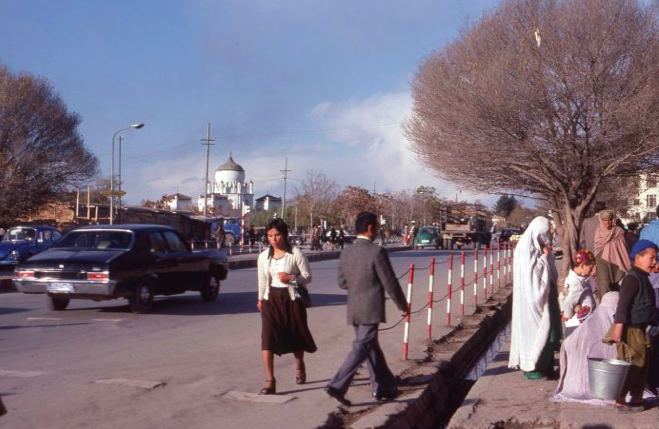
Street scene in Kabul, November 1978. During the Marxist Taraki period, women were free to dress as they wished with no restrictions. [Photo by John Ryan]
The new government was faced with a variety of major problems. In the 1970s, life expectancy was 35; 1-in-3 children died in infancy, the highest in the world. Ninety percent of the population was illiterate. These were issues that the new government was determined to deal with.
Without question, this appeared to be a genuinely popular government and people seemed to look forward to the future. In short order, the Taraki government invited Soviet contractors and engineers to build roads, schools and hospitals …. with funds provided by the USSR. Soviet geologists discovered vast quantities of lithium and minerals in Afghanistan; vital resources which the government intended to exploit in the interests of the entire nation.
A dynamic medical doctor, Anahita Ratebzad, was appointed minister for Education in the Taraki government. Since the overthrow of this progressive government, Ratebzad’s role has virtually been erased from Afghanistan’s history. In one of her most famous editorials for the New Kabul Times she wrote:
Privileges which women, by right, must have are equal education, job security, health services, and free time to rear a healthy generation for building the future of the country … Educating and enlightening women is now the subject of close government attention.
Women played a key role in the Taraki government; the gains had no precedent. About half of Kabul’s university students were women during the 1980s and women made up 40 percent of Afghanistan’s doctors, 70 percent of its teachers and 30 percent of its civil servants. Thousands of women enrolled in the armed forces and there were 7 women in parliament. Young female students roamed the streets of Kabul in denim flairs and t-shirts, dating men of their own choice. Many people spoke of a golden era.
The radical changes that occurred remain vivid in the memories of those who benefited. Saira Noorani, a female surgeon who fled Afghanistan in 2001, recalled:
“Every girl could go to high school and university. We could go where we wanted and wear what we liked … We used to go to cafes and the cinema to see the latest Indian films on a Friday … it all started to go wrong when the mujahedin started winning … these were the people the West supported.”
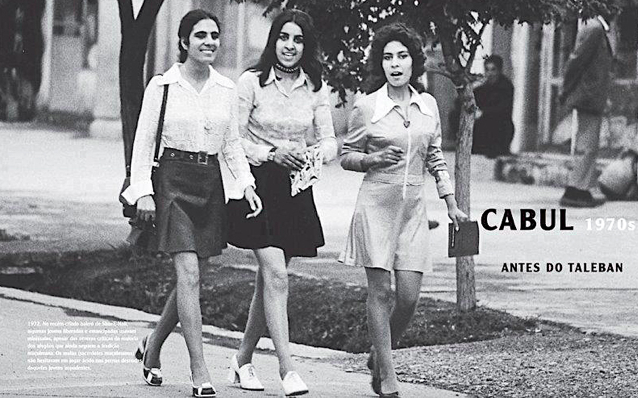
Women at university in Afghanistan in the late 1970s. (Amnesty International U.K.)
Admittedly, the issue of women’s rights and education for girls was controversial, and fundamentalist mullahs (clerics) conducted campaigns against this. It’s very important to point out that many of the 250,000 mullahs were landlords and they vehemently opposed the proposed land reforms.
In their sermons in mosques, they urged the Afghan people to oppose the government’s plans because according to them it was only Allah who could grant land to them, and also that Allah would object to giving women equal rights or having girls go to school. But despite their pleadings, the reforms were popular in the general population. And because of this, these reactionary elements left for Pakistan, as so-called, “refugees.” These were the people who not only opposed land reform but all the other social and economic reforms as well.
But…behind these mullahs, there was a much more powerful opponent to the Afghan government — it was the USA. Although having no right to interfere in another country’s affairs, the USA viewed the new government as being Marxist and was determined to subvert it. On July 3, 1979, unknown to the American people and Congress, President Carter authorized a $500 million “covert action” program to overthrow Afghanistan’s first secular, progressive government. This was code-named by the CIA “Operation Cyclone.” Immediately after this, the CIA, along with Pakistan and Saudi Arabia, began to provide military aid and training to Muslim extremists who became known as the mujahideen and “freedom fighters.”
And to make the USA’s determination crystal clear, noted journalist John Pilger stated that
“In August 1979, the U.S. embassy in Kabul reported that ‘the United States’ larger interests … would be served by the demise of the PDPA government, despite whatever setbacks this might mean for future social and economic reforms in Afghanistan.’ . . . It is not often that such cynical intent is spelt out as clearly. The U.S. was saying that a genuinely progressive Afghan government and the rights of Afghan women could go to hell. . . Recruited from all over the Muslim world, America’s secret army was trained in camps in Pakistan run by Pakistani intelligence, the CIA and Britain’s MI6.”
In addition to this, alienated Afghan mullahs and landlords along with Muslin fanatics migrated to Pakistan where, through the efforts of the CIA, they were given arms and training to subvert the Afghanistan government. After getting military training and guns in Pakistan, and together with fanatic Muslims recruited by the CIA, they proceeded to conduct raids on the Afghan countryside where they burned clinics and schools, and if they found teachers teaching girls, they would kill the teachers, often disembowelling them in the presence of the children – to instill fear and panic in the population.
Another aspect of the US counter-revolution strategy involves a man named Hafizullah Amin. During the 1960s while studying at Stanford University, he appears to have been recruited by the CIA, and came back to Afghanistan, pretending he was a hard-line Marxist. Through him the CIA infiltrated the Taraki government. This has never been officially acknowledged, but there is substantial evidence to support this. [2] His actions while in office reflect exactly what a CIA agent would have been expected to do. He cleverly worked his way to the top – first becoming defence minister and later the prime minister. In September of 1979 he carried out a coup, took over the government, had Taraki killed, and many of Taraki’s loyal supporters were then killed, jailed, or exiled.
Amin then proceeded to undermine and discredit the Marxist government. He enacted draconian laws against the Muslim clergy, to purposefully further alienate them. Many of Taraki’s progressive reforms were halted and thousands of people were jailed. Senior army officers were demoted, jailed or killed, and in that way he weakened the Afghan army.
In the meantime, the CIA’s trained and armed mujahideen came in by the thousands to attack parts of the country, especially to destroy health clinics and schools and kill teachers.
In a matter of three months, with the combined actions of the mujahideen and the counterproductive policies of Amin, the socialist progressive government was almost destroyed. It’s a matter of record that during this time Amin held numerous meetings with the American charge d’affaires and other US officials. [3] He also sent emissaries to hold secret meetings with the top mujahideen leader in Pakistan, Gulbuddin Hekmatyar. [4] Apparently Amin had laid plans for a further coup d’état to eliminate all progressive elements in the government and then join forces with the mujahideen – to form a fundamentalist Islamic state, with himself as president and Hekmatyar as prime minister. [5]
But, near the end of December in 1979, Amin was overthrown and killed either by a regiment of the Afghan army that still had Taraki supporters or by Soviet soldiers – the truth still being difficult to establish. The USSR always denied having anything to do with this. The fact is that some Soviet troops had been in Afghanistan since December 8, at the Afghan government’s invitation. [6]
With the overthrow of Amin, there was great jubilation and about 10,000 political prisoners were released, and when Babrak Karmal became president (after being in exile in Czechoslovakia), he would have been hailed as a hero, if he had come in on his own. What soured the situation is the entry of Soviet troops.
Shortly before Taraki’s murder, he had been on a trip to Moscow where he pleaded with the Soviets to send some troops to Afghanistan to help its government deal with the insurrection. And so on the basis of this invitation as well as from the terms of a 1978 Afghan-Soviet treaty, the USSR sent in their troops. Their purpose was to ward off the thousands of well-armed mujahideen invaders, many being foreign mercenaries.
What’s not widely known is that the USA through the CIA had been actively involved in Afghan affairs for at least a year before this, and so it was in response to this that the Soviets arrived on the scene.
Sending in troops to Afghanistan was a colossal blunder on the part of the Soviet Union. If they had simply provided weapons for the Afghan government’s forces, they may have survived the “barbarians at the gates” – because ordinary Afghan people were not fanatics and most of them supported the government’s progressive reforms.
The advent of Soviet troops on Afghan soil tragically set the stage for the eventual destruction of the country. Zbigniew Brzezinski, President Carter’s National Security Advisor, afterwards bragged that he had convinced Carter to authorize the CIA to set a trap for the Russian bear and to give the USSR the taste of a Vietnam war. [7] Brzezinski saw this as a golden opportunity to fire up the zeal of the most reactionary Muslim fanatics — to have them declare a jihad (holy war) “on the atheist infidels who defiled Afghan soil” — and to not only expel them but to pursue them and “liberate” the Muslim-majority areas of the USSR. And for the next 10 years, with an expenditure of billions of dollars from the USA and Saudi Arabia, and with the recruitment of thousands of non-Afghan Muslims into the jihad (including Osama bin Laden), this army of religious zealots laid waste to the land and people of Afghanistan.
Central Asia specialist Ahmed Rashid wrote [8]:
“With the active encouragement of the CIA and Pakistan’s ISI [Inter-Services Intelligence] who wanted to turn the Afghan jihad into a global war, waged by all Muslim states against the Soviet Union, some 35,000 Muslim radicals, from 40 Islamic countries joined Afghanistan’s fight between 1982-1992. Tens of thousands more came to study in Pakistani madrasahs. Eventually more than 100,000 foreign Muslim radicals were directly influenced by the Afghan jihad.”
It should be understood that Afghan people don’t have a history of being religious zealots. To create the CIA-desired jihad required the recruitment of Arab, Egyptian, and Pakistani extremists – so the fundamentalism that emerged in Afghanistan is a CIA creation. Although Reagan referred to the mujahideen as “freedom fighters,” they committed horrific atrocities and were terrorists of the first order.
As reported in the Washington Post (May 11, 1979, p.12), a “favourite tactic” of the mujahedeen was “to torture victims [often Russians] by first cutting off their noses, ears, and genitals, then removing one slice of skin after another,” leading to “a slow, very painful death.” The article describes Russian prisoners caged like animals and “living lives of indescribable horror.” Another publication [9] reported that “one [Soviet] group was killed, skinned and hung up in a butcher’s shop”.
Despite these graphic reports, President Reagan continued to refer to the mujahedeen as “freedom fighters” and in 1985 he invited a group of them to Washington where he entertained them in the Whitehouse. Afterwards, while introducing them to the media, he stated, “These gentlemen are the moral equivalents of America’s founding fathers.”
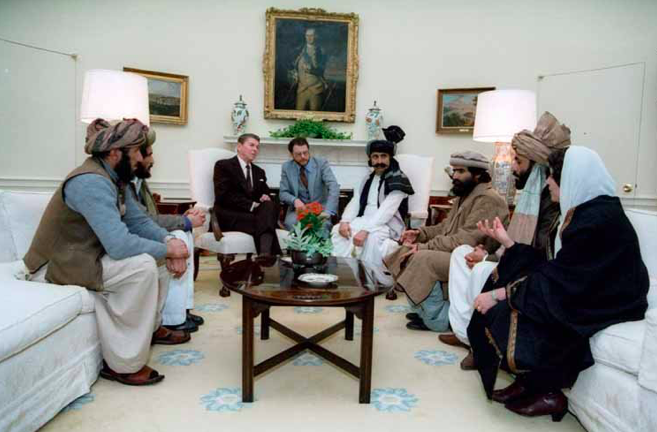
Ronald Reagan meets Afghan Mujahideen Commanders at the White House in 1985 (Reagan Archives)
Surely Soviet soldiers were every bit as human as American soldiers – just suppose it had been American soldiers who had been skinned alive. Would President Reagan in such an instance still refer to the mujahideen as “freedom fighters” . . . or might he then call them terrorists, just as the Soviets had done? Indeed…how these actions are portrayed depends on whose ox is gored.
The cynicism of arming and funding the mujahideen against the Soviets exposes the lie of America’s humanitarian concerns in Afghanistan. It was basically the CIA that created the mujahideen whose purpose was to try to overthrow the Afghan Marxist government and thereby lure in the USSR. As the US expected, the Soviets eventually sent in an army to fight the mujahideen. During the ensuing 10-year conflict, it’s estimated that between a half million to a million Afghan civilians were killed, along with 90,000 mujahideen fighters, 18,000 Afghan government troops, and 14,500 Soviet soldiers.
But it seems that in America’s eyes, these deaths, along with the destruction of Afghanistan, were “worth it” to cripple the Soviets. When later confronted with these facts, Brzezinski, President Carter’s advisor, had no regrets.
The Soviets succumbed to their Vietnam and withdrew their troops in February of 1989, but the war raged on. Somehow it is generally thought that the Afghan socialist government collapsed as soon as the Soviets left, but that’s not true. Seeing the viciousness of the mujahideen, a large portion of the Afghan population, especially the women, supported the quite moderate government, later under Mohammad Najibullah, and without a single Soviet soldier on their territory, they fought on for another three years. In fact, their government outlasted the USSR itself, which collapsed in December of 1991.
The crucial factor that undermined the Afghan government was the treachery of Americans. The Soviets agreed to pull out their troops, but it was on the understanding that both the USSR and the USA would stop all military and economic aid to Afghanistan. The Soviets honoured the agreement, but the USA, Pakistan, and Saudi Arabia violated the agreement and continued to support the mujahideen.
Seeing that the US did not honour their agreement, the Soviets should have provided the Afghan government with some economic and military aid. They then might have withstood the mujahideen attacks. [11] As it was, because of the unending supply of superior American weapons and no economic assistance, the Marxist government was finally defeated in April of 1992.
The victorious mujahideen, first of all, slaughtered the members of the previous secular government and thousands of progressive-minded people. Then for the next four years they fought amongst themselves. The mujahideen consisted of at least seven warring factions, all battling for territory and control of the opium trade. In the course of these battles, they conducted looting and rape campaigns. The dreadful mujahideen infighting finally ended in September 1996 when their forces were routed from Kabul by new combatants on the scene, the Taliban.
When in 1992 the mujahideen took Kabul, Dr. Najibullah, the last progressive president,found refuge in the United Nations compound where he lived until 1996. On September 27 the Taliban took Najibullah from his refuge, castrated him, dragged him behind a car over Kabul streets, finished him with a gunshot and hung his body from a traffic post.
During these years of civil war, Kabul was almost totally destroyed, as were many other cities — with the greatest damage occurring after the Marxist defeat during the fratricidal conflict. The landlords came back immediately after the mujahideen victory.
The Taliban were determined to bring about a peaceful state of affairs. They vowed to unify the country under Islamic law and to end the corruption and insecurity under the rule of the warlords and mujahideen. They found support, especially in poor, rural areas that had suffered most from the bloodletting.
So, who were these Taliban? It is often mentioned that they emerged from religious schools in Pakistan. It’s important to know their background. Interestingly, it’s the CIA that created them.
The CIA recruited Wahhabi missionaries from Saudi Arabia to go to Pakistan and later to Afghanistan to set up Sunni Islamic fundamentalist religious schools, madrassas. The CIA and their agents then recruited young Afghans to go to these schools where they became brainwashed religious fanatics. The word Taliban means “students in an Islamic school.”From Pakistan the madrassas moved to Afghanistan and during the 1980s their number increased to about 40,000. These schools were essentially CIA covert psychological operations, whose purpose was to inspire divisiveness and opposition to the Marxist Afghan government.
Through these covert CIA machinations, the US essentially destroyed secular education in Afghanistan. In the course of this,
“The United States spent millions of dollars to supply Afghan schoolchildren with textbooks filled with violent images and militant Islamic teachings…. The primers, which were filled with talk of jihad and featured drawings of guns, bullets, soldiers and mines, have served since then as the Afghan school system’s core curriculum. Even the Taliban used the American-produced books … Published in the dominant Afghan languages of Dari and Pashtun, the textbooks were developed in the early 1980s under an AID grant to the University of Nebraska -Omaha and its Center for Afghanistan Studies. The agency spent $ 51 million on the university’s education programs in Afghanistan from 1984 to 1994.” (Washington Post, 23 March 2002)
Although the Taliban ended the civil war, unfortunately, with them on the scene a virtual war was declared on women. The Taliban were religious fanatics and they somehow accepted a perverted religious view in regard to women, which in actuality has no basis in Islamic law. Thousands of women were dismissed from their jobs as teachers, doctors, professors, and work of all kinds. They were then not allowed to participate in the work force or even have doctors treat them (without a male relative present), and girls were forbidden to go to school. Terror, in all its forms, became the basis of the regime — it became a regime of fascist Muslims, but it was a regime that was initially kept in power largely by Pakistan.
Despite the atrocities of the Taliban regime, they initially had support in the Clinton administration because it was thought that the Taliban would bring in “stability” which would enable the construction of oil and natural gas pipelines through the country. Moreover, the later Bush administration provided $124 million in aid to Afghanistan and continued pipeline talks almost until the fateful September 11. [11]
As for the mujahideen that this conflict created, they took on a life of their own, and spread throughout the Muslim world. One of the key players in the anti-Soviet, U.S.-led regime change project was Osama bin Laden, a Saudi-born millionaire who came from a wealthy, powerful family and had close ties to the Saudi royal family. He was brought to Afghanistan to organize recruitment for the mujahideen and is believed to have received security training from the CIA. In 1989, the same year that Soviet troops withdrew, Osama bin Laden founded the terrorist organization Al Qaeda. Ironically, after grooming him for their purposes, the USA would eventually turn bin Laden into a scapegoat after the 2001 terrorist attacks.
If we are to learn anything from the Afghanistan tragedy, it is important to understand that if the USA had left the Marxist Taraki government alone, there would have been no army of mujahideen, no Soviet intervention, no war that destroyed Afghanistan, no Osama bin Laden, and perhaps no September 11 tragedy in the USA.
But what about the events after September 11, 2001? After the trauma of the 9/11 assault, what should have been the rational response? Clearly, this was a criminal act, but it was not an act of war by some foreign government. If the US had any evidence linking Osama bin Laden or anyone else to this, they should have taken the necessary steps to have these people brought to the International Criminal Court to be tried as criminals. Instead, the US immediately demanded that the Taliban government surrender Osama bin Laden to them.
In response, the Taliban offered to turn him over to an international tribunal, but only after seeing evidence of his guilt in 9/11. [12] The US refused to do this, and the actual reason surfaced when it was revealed that Rex Tomb, Chief of Investigative Publicity for the FBI, had made the astounding statement that “. . . the FBI has no hard evidence connecting bin Laden to 9/11.” [13]
So what was the war on Afghanistan all about if, years later, the USA still didn’t have proof connecting bin Laden to 9/11? This is an astonishing revelation, but the mainstream media never reported this.
To counter the USA’s accusation that he was responsible for the 9/11 attacks, bin Laden stated repeatedly — on September 12, 16, 17, and 28 — that he had had nothing to do with the attacks. In the September 28 statement, he had even declared:
“I have already said that I am not involved in the 11 September attacks in the United States. As a Muslim, I try my best to avoid telling a lie. I had no knowledge of these attacks, nor do I consider the killing of innocent women, children and other humans as an appreciable act. Islam strictly forbids causing harm to innocent women, children and other people. Such a practice is forbidden even in the course of a battle. . . . [W]e are against the American system, not against its people, whereas in these attacks, the common American people have been killed.”
It’s obvious that the FBI accepted this because they never retracted their position that they had any hard evidence connecting bin Laden with 9//1. In fact, this was on the FBI website right up until after May 2, 2011, when bin Laden was supposedly killed by a US military assault in Pakistan. But there are serious questions even about this as well, since there is some evidence that bin Laden had actually died of kidney failure some years before. See here, here, here. This issue deserves further analysis, but not within this article.
In rare unanimity, a number of Afghan groups pleaded with the US government not to bomb or invade the country. Noam Chomsky cites the New York Times as reporting that this was “a rare display of unity among tribal elders, Islamic scholars, fractious politicians, and former guerrilla commanders” [14] They unanimously “urged the US to stop the air raids . . . and the bombing of innocent people” and pleaded with the US to adopt other means to overthrow the Taliban. [15]
They pointed out that the Taliban who ran the country consisted of a small and closed group and without constant assistance from Pakistan and Saudi Arabia the central leadership could be undermined – and once they’d lose the support of their gun-toting rank and file, the regime could be easily overthrown. So if the Americans wanted a regime change, the Afghan people themselves were fully prepared to do it. All the US had to do was to put pressure on Pakistan and Saudi Arabia to stop their support of the Taliban.
Never mentioned officially, but aside from the “official” 9/11 reason for attacking Afghanistan, there was an undisclosed reason. It appears that one of the key strategic objectives of the 2001 war on Afghanistan was to restore the opium trade following the Taliban government’s successful 2000-2001 drug eradication program which led to a 94% collapse in opium production. This program had been supported by the United Nations.
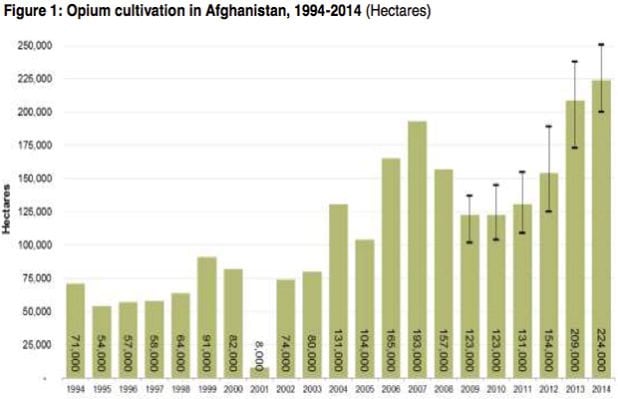
UN data (1994-2014)
As a result of the war launched by the USA in Afghanistan, many thousands of Afghan people were killed – all being just as innocent as the people in New York – the difference being that Afghans continued to be killed for next 20 years.
So where do we now stand? It should be obvious that the 9/11 attacks were the work of an organization far more powerful and professionally skilled than a rag-tag band of nineteen random Arabs armed with box-cutters. As such, who attacked the USA on September 11, 2001?
Strange as it may seem, even 20 years later, it’s still not known who was responsible for it. At first it appeared that the plot was hatched in Hamburg, Germany by an Al-Qaeda group, hence this had nothing to do with Afghanistan. Over the years, several reputable reports have shown that there is substantial evidence that it was Mossad and Israel that were somehow implicated in order for the US to take a more aggressive stance towards Muslim countries. This is still an ongoing issue, since a major investigative report appeared a few days ago, September 10, “implicating Israel and its Mossad intelligence service, with the case being overwhelmingly strong in motive, means, and opportunity. But leveling accusations of blame at Israel and its domestic collaborators for the greatest attack ever launched against America on our own soil entails enormous social and political risks.” Other reports on this issue are here, here, here, here, here, here, here and there are others in addition.
9/11 and the American War
A month after 9/11, the US launched its war on Afghanistan. Not having approval of the United Nations, this was an illegal war. But this was never reported in the mainstream media, so few people were aware of this fact.
The bombing began on October 7th. The published images of the war were shocking in the violence they portrayed. Many people in Europe were appalled by the scale of the bombing against a defenceless population, and the utter disregard for Afghan lives. But in the United States that autumn, the mixture of vengeance and patriotism meant dissenting voices were rare and scarcely heard.
At first the attack was by bomber planes and then US soldiers came in. The Taliban realized it was hopeless for them to resist, so they just abandoned Kabul and fled into the countryside. However, the US did have the support of the forces of the Northern Alliance, a coalition of non-Pushtun warlords in the north of the country.
Initially, there was not much fighting. Taliban leaders and their supporters went home to their villages or into exile in Pakistan.
For two years there was no resistance to the American occupation. None, in any village or city. The reason is that most ordinary people, even in the Taliban heartland in the south, dared to hope that the American occupation would bring Afghanistan peace and develop the economy to end the terrible poverty.
Peace was crucial. By 2001 Afghans had been trapped in various wars for twenty-three years. By 2001 even Taliban supporters felt a bad peace was better than a good war.
All this was the basis for a possible good ending to the US invasion, but the US fouled this up. Instead of accepting this peaceful state of affairs, the US in a grossly misguided fashion, decided that its mission was to root out any remaining “bad characters.” Night raids crashed through doors, humiliating and terrifying families, taking men away to be horribly tortured for information about any opposition to the US-installed government. At the slightest excuse, the Americans called in airstrikes and their bombs killed family after family. And so war returned across the south and east of the country.
No one was ever held to account for the American torture regime in Afghanistan. The U.S. launched more than 13,000 drone strikes in Afghanistan between 2015 and 2020, killing up to 10,000 people. The CIA, relying on cellphone numbers, often launched its Hellfire missiles at the wrong targets or at targets standing amid groups of civilians.
This practice has devastated Afghan villages, yet the U.S. refused to keep track of civilian casualties from drone strikes. Overall, the American occupation had been unbearably cruel and corrupt. In this manner the US totally discredited itself in the eyes of most Afghan people. And so it was time for the US to go.
In the course of all this, there is an important issue that must still be dealt with, and that is the matter of Afghan opium poppy farming. Soon after the Taliban took control of Afghanistan this past August, their spokesman Zabihullah Mujahid said: “When we were in power before there was no production of drugs. . . we will bring opium cultivation to zero again.”
This was verified by a UN report in May 2001 which “observed the near total success of the ban in eliminating poppy cultivation in Taliban controlled areas”. However, immediately following the US invasion and takeover of the country, poppy production resumed with considerable vigour for the next 20 years. In fact, the area under opium poppy cultivation increased from 163,000 hectares in 2019 to 224,000 hectares in 2020 – an increase of 37%. Over the years, Afghanistan has been responsible for more than 80% of global opium production, as illustrated in this UN diagram:
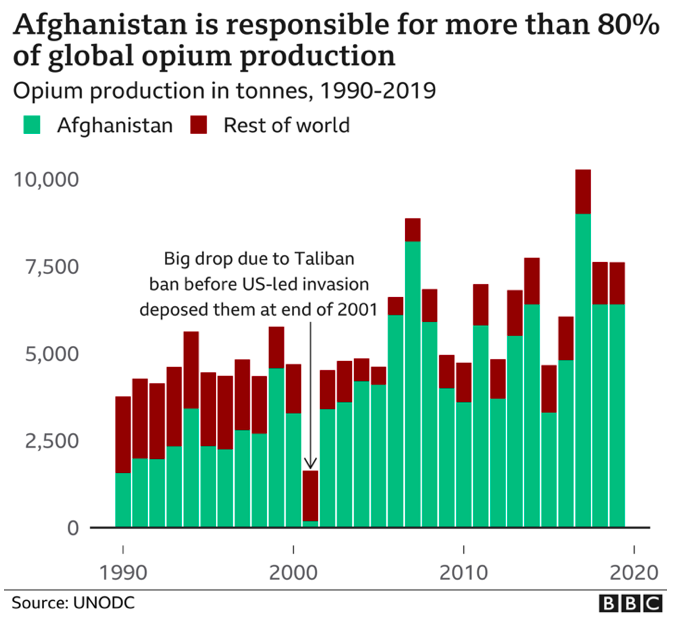
At present, heroin made from opium grown in Afghanistan makes up 95% of the market in Europe. However, only 1% of the US supply of heroin comes from Afghanistan, according to the US Drug Enforcement Agency. Most comes from Mexico. As for Afghanistan, in 2018 the UNODC estimated opium production contributed up to 11% of the country’s economy.
Although never discussed in the mainstream media, arguments have been advanced that one of the key strategic objectives of the 2001 war on Afghanistan was to reopen the opium trade following the Taliban government’s successful 2000-2001 drug eradication program. Immediately following the US October 2001 invasion, opium markets were restored and opium prices spiraled. By early 2002, the opium price (in dollars/kg) was almost 10 times higher than in 2000.
The resumption of opium trade provided a vital source of finance for the CIA and other US intelligence agencies. As put forward by journalist Finian Cunningham, “The big advantage from drug business is that the finances are off the books, and therefore not subject to Congressional oversight. That “dark” source of income allows American agencies to fund covert operations without ever being held to account.”
To add to this, Russia’s presidential envoy to Afghanistan, Zamir Kabulov, is quoted as saying that CIA complicity in drug trafficking is “an open secret” in the country. “US intelligence officers… are involved in drug trafficking. Their planes from Kandahar, from Bagram [airfield near Kabul] are flying wherever they want to – to Germany, to Romania – without any inspections.”
During the USSR’s engagement in Afghanistan, both the CIA and the mujahideen rebels were deeply involved in the opium trade. Over the years the CIA was paying $3.2 billion a year in their role in the Afghan war, and part of this was financed by the drug trade.
With so many factors at play, US involvement in Afghanistan became an archetypal quagmire. America’s declared strategic objectives in Afghanistan have never been coherent or convincing even to some top government officials. The initial justification of “avenging terrorism of 9/11” now sounds threadbare.
Afghanistan is known as the “Graveyard of Empires” where the British suffered a blow to their imperial prowess, where the Soviets failed in their attempt to salvage a progressive government, and now the defeat of the Americans after their senseless 20-year war.
During this past 20-year period, 775,000 American soldiers served in Afghanistan. Of these, it is reported that 2,442 were killed and 20,666 were injured. In addition, 1,144 other NATO soldiers were killed. Afghan military and police had about 70,000 killed. The report also states that about 50,000 Taliban fighters were killed. Overall, about 240,000 people have been killed in the Afghanistan and Pakistan war zone since 2001. As such, the majority of those killed were civilians.
Even in the absence of fighting, unexploded ordnance from this war and landmines from previous wars continue to kill, injure, and maim civilians. It remains to be seen if the Americans will have the decency to try to remove these deadly remains of their war.
Initially, after the US invasion, Afghans had hoped for development that could lift both the rich and the poor. But when American money poured into Afghanistan, it went the people in the new government headed by Hamid Karzai. It went to the people working with the Americans and the occupying troops of other nations. And it went to the warlords and their entourages who were deeply involved in the international opium and heroin trade facilitated by the CIA and the Pakistani military. None of this money got to ordinary Afghan people.
Afghans had long been used to corruption, but as time went by the scale of this US-dominated period was unprecedented. In the eyes of the poor and middle-income people, all the obscene new wealth, was obvious corruption. In light of all this, the Taliban decided that they had no recourse but to get rid of the Americans.
A further indication of corruption and neglect for the overall population is that the number of Afghans reporting that they were struggling to live on their current income increased from 60% in 2008 to 90% by 2018. A 2018 Gallup poll found the lowest levels of self-reported “well-being” that Gallup has ever recorded anywhere in the world. Afghans not only reported record levels of misery but also unprecedented hopelessness about their future.
Over the last decade the Taliban have offered two things across the country. The first is that they are not corrupt, and people could see this.
Second, the Taliban have run an honest judicial system in the rural areas they have controlled. Their reputation is so high that many people involved in civil lawsuits in the cities have agreed that both parties will go to Taliban judges in the countryside. This allows them swift, cheap and fair justice without massive bribes. Because the justice was fair, both parties can live with it.
Because of these issues, the Taliban gradually acquired genuine support in a large part of the Afghan population. The Taliban have learned and changed. The Taliban have realized that Pushtun chauvinism was a great weakness. They now emphasize that they are Muslims, brothers to all other Muslims, and they now have the support of Muslims of many ethnic groups.
The new Taliban have also emphasized their concerns for the rights of women. They say they welcome music, and videos, and have moderated the puritanical sides of their former rule. And they are now saying over and over again that they want to rule in peace, without revenge on the people of the old order. However, there is still a minority who do not go along with this. But that’s only to be expected in such a wide range of people in the country.
The Taliban, who banned the internet the first time they controlled Afghanistan, have turned social media into a powerful tool to tame opposition and broadcast their messages. Ironically, the images of peace and stability projected by the Taliban contrasted sharply with the scenes broadcast around the world of the chaotic American evacuation from the Kabul airport.
In one video, a Taliban official reassured female health workers that they could keep their jobs. In another, militants told Sikhs, a minority religious group, that they were free and protected. And wherever they were, they provided a sense of law and order.
Overall, this is a turning point in world history. The greatest military power in the world has been defeated by the people of a small, desperately poor country. As such, this will weaken the power of the American empire all over the world.
This is a military and political victory for the Taliban. It is a military victory because the Taliban have won the war. Over the last ten years the Taliban took control of more and more villages and towns. This is also a political victory for the Taliban. No guerilla insurgency on earth can win such victories without popular support.
The Taliban of 2001 were overwhelmingly Pushtuns, and their politics was Pushtun chauvinist. In 2021 Taliban fighters of many ethnicities have taken power in Uzbek and Tajik dominated areas.
Of course, not all Afghans have chosen to side with the Taliban. This was a war against foreign invaders, but it is also a civil war. Many have fought for the Americans and the American installed government or the warlords. And many others are not sure which side to take and are waiting with different mixtures of fear and hope to see what would happen.
In time it became obvious that the Taliban were the only important political organization fighting the American occupation, and most Afghans have come to hate that occupation.
In conclusion, what is it that has happened during this past month of August? If those so-called ‘good Afghans’ who were nurtured by US forces truly represented Afghan society, why did their army of 300,000 men drop their weapons and desert or flee the country, along with their President, without a serious fight? And if the 75,000 poorly-armed and, at times, malnourished Taliban seemed to merely represent themselves, why did they manage to defeat formidable enemies in a matter of days?
Ironically, four US administrations spent at least $2.26 trillion fighting the Afghan war which included $88 billion arming and supplying a military that, in the end, disintegrated and “disappeared.”
From what we now see, there is no question that the Taliban have acquired support from the Afghan people in most sections of the country. They could not have won this brutal war without substantial grassroots support.
On September 9, a Taliban spokesman announced the composition of their new caretaker government. He provided the names of the 33 acting cabinet ministers. He stressed that this new cabinet is just an “acting” government. This implies one of the next big steps will be to set up a new constitution. Also, that eventually the government will include people from all parts of the country and implied that women and Shi’ites will be included.
The acting government that was announced will consist of an all-male, overwhelmingly Pashtun cabinet essentially of the Taliban old guard. It includes only one Uzbek and one Tajik. All 33 appointees are Taliban members.
This announcement was met with some consternation in the USA because a number of the appointees have been listed as terrorists, including the acting Prime Minister, Mohammad Hasan Akhund.
The Taliban’s government is a caretaker one, and the militants may very well hold free and fair elections and then install an inclusive government.
It’s too early to tell how the new Taliban will function with all the problems they will encounter. But they are now a much wiser, more traveled, social media-savvy Taliban. They seem to be fully aware they cannot allow themselves to repeat the mistakes of their early years. Also, they’ve already established good relations with China, Russia and Iran, with the possibility of getting economic help from them.
*
Note to readers: Please click the share buttons above or below. Follow us on Instagram, @crg_globalresearch. Forward this article to your email lists. Crosspost on your blog site, internet forums. etc.
John Ryan, Ph.D., Retired Professor of Geography and Senior Scholar, University of Winnipeg, Canada.
Notes
- All these reforms and government measures were explained to me at considerable length by the Dean of Agriculture and some of the professors during a lengthy session at Kabul University.
- “How the CIA turns foreign students into traitors,”Ramparts (San Francisco), April 1967, pp. 23-24; Phillip Bonosky, Washington’s Secret War Against Afghanistan, New York: International Publishers, 1985, pp.33-34; The Truth About Afghanistan: Documents, Facts, Eyewitness Reports, Moscow: Novosti Press Agency Publishing House, 1980, pp. 83-96; Washington Post, December 23, 1979, p. A8.
- William Blum,Killing Hope: US Military and CIA Interventions Since World War II, Monroe, Maine: Common Courage Press, 1995, p. 343.
- Phillip Bonosky,Washington’s Secret War Against Afghanistan, New York: International Publishers, 1985, pp. 33-34
- The Truth About Afghanistan: Documents, Facts, Eyewitness Reports,Moscow: Novosti Press Agency Publishing House, 1980, pp. 91-92.
- Washington Post, December 23, 1979, p.A8. Soviet troops had started arriving in Afghanistan on December 8, to which the article states: “There was no charge [by the State Department] that the Soviets had invaded Afghanistan, since the troops apparently were invited.”
- “How Jimmy Carter and I Started the Mujahideen”: Interview of Zbigniew BrzezinskiLe Nouvel Observateur (France), Jan 15-21, 1998, p.76.
- Ahmed Rashid, “The Taliban: Exporting Extremism,”Foreign Affairs, November-December 1999.
- John Fullerton,The Soviet Occupation of Afghanistan, (London), 1984 cites a journalist from the Far Eastern Economic Review reporting that “one [Soviet] group was killed, skinned and hung up in a butcher’s shop.”
- Zayar, “Afghanistan, Bin Laden and the hypocrisy of American imperialism,”In Defence of Marxism, September 26, 2001.
- “When the U.S. committed $43 million in aid to Afghanistan in May 2001, it brought the total of U.S. aid to the country that year alone to $124 million,” cited in article by Joseph Farah, “Murray pushed for aid to Taliban before to 9/11,”com, December 26, 2002.
- “Taliban repeats call for negotiations,”com, October 2, 2001, includes the comment: “Afghanistan’s ruling Taliban repeated its demand for evidence before it would hand over suspected terrorist leader Osama bin Ladin.”; Noam Chomsky, “The War on Afghanistan,” Znet, December 30, 2001.
- Ed Haas, “FBI says, it has ‘No hard evidence connecting Bin Laden to 9/11’,”Muckraker Report, June 6, 2006.
- Noam Chomsky, “The War on Afghanistan,”Znet, December 30, 2001.
- Barry Bearak, “Leaders of the Old Afghanistan Prepare for the New,”NYT, October 25, 2001; John Thornhill and Farhan Bokhari, “Traditional leaders call for peace jihad,” FT, October 25, 2001; “Afghan peace assembly call,” FT, October 26, 2001; John Burns, “Afghan Gathering in Pakistan Backs Future Role for King,” NYT, October 26, 2001; Indira Laskhmanan, “1,000 Afghan leaders discuss a new regime, BG, October 25, 26, 2001; Noam Chomsky, op. cit.
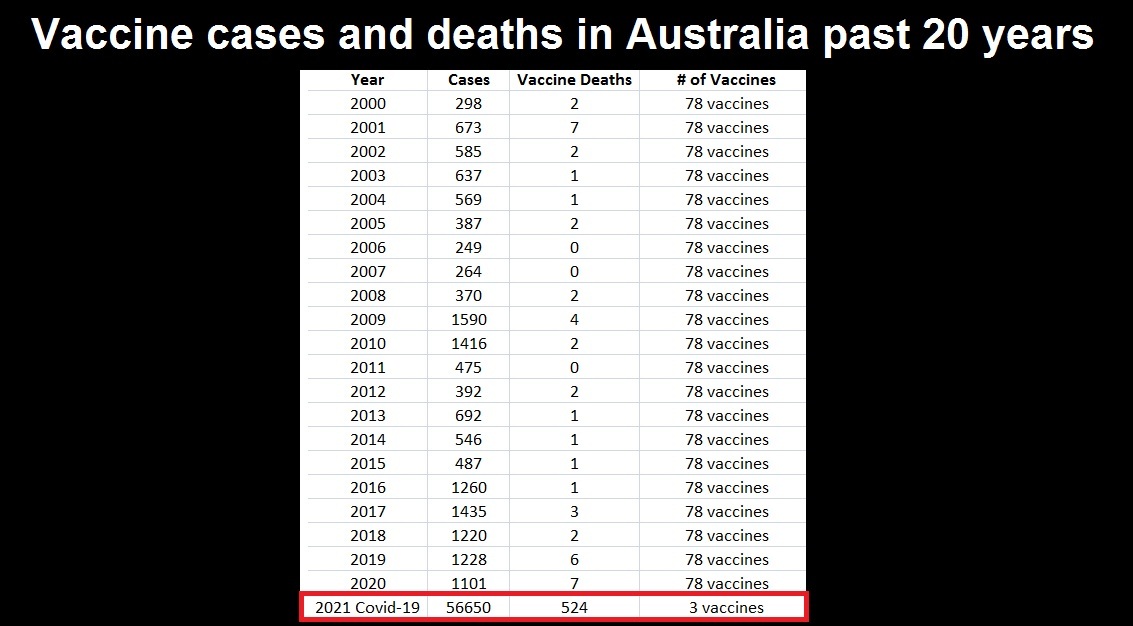







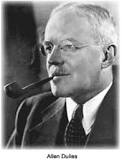
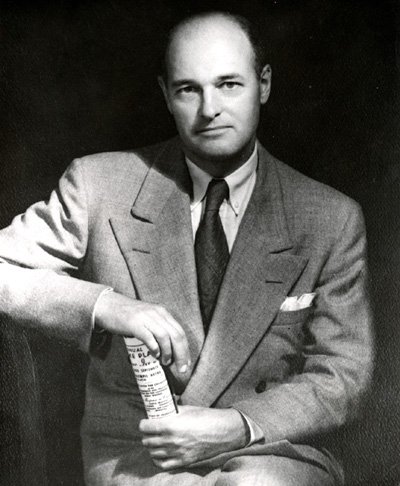
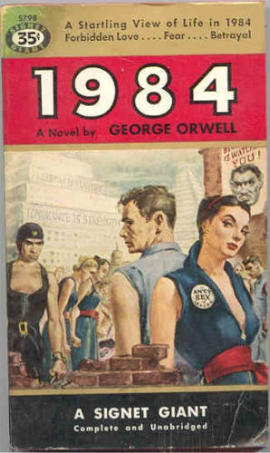
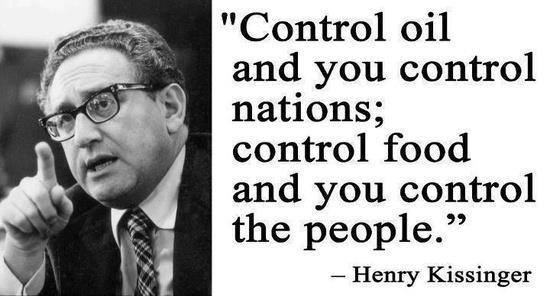










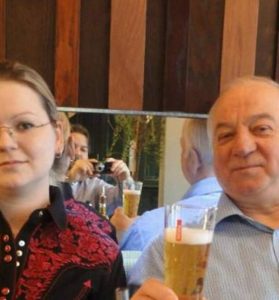
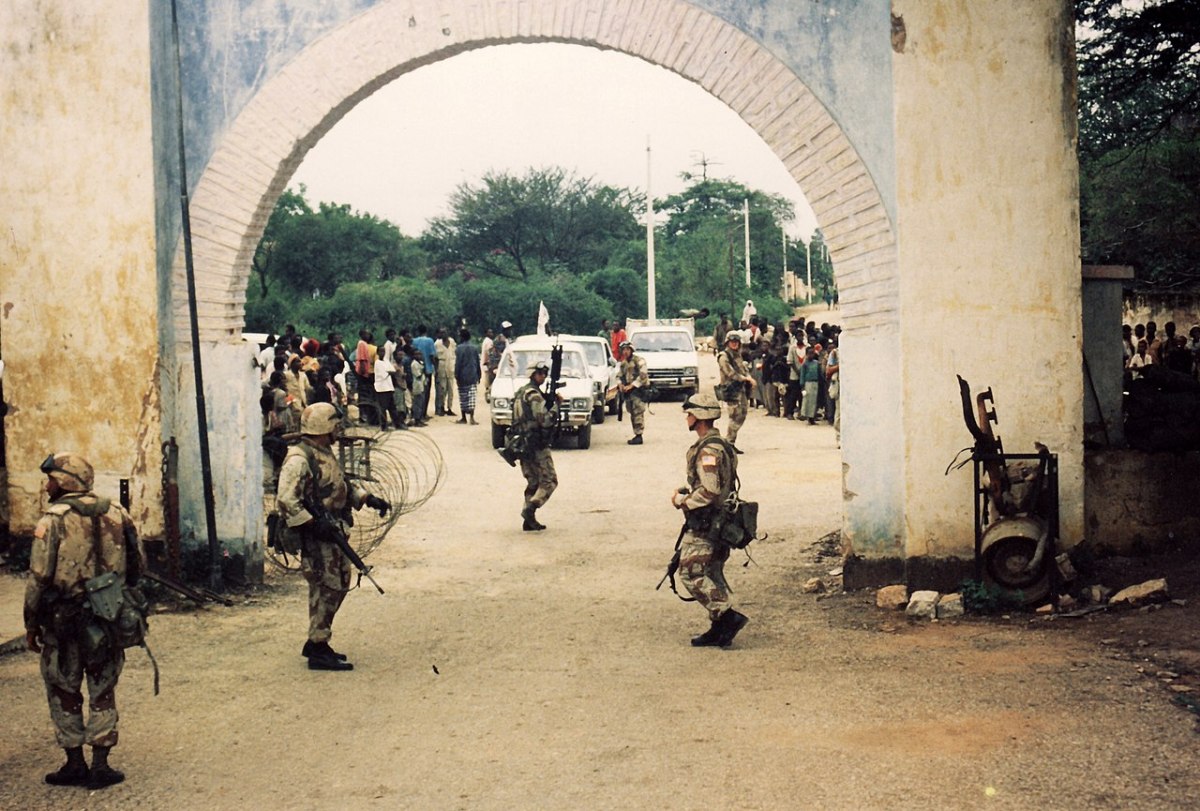
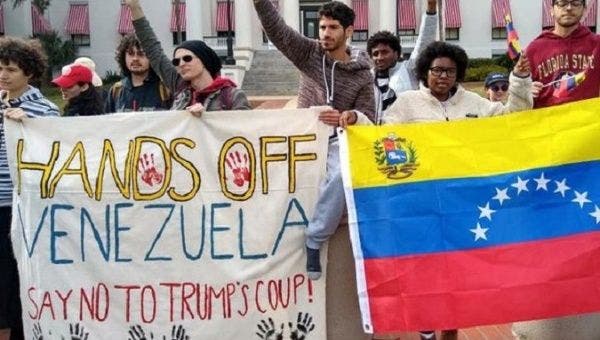
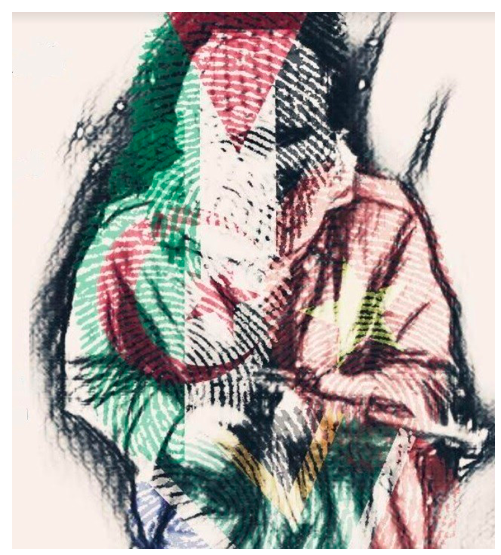


 Bombshell: FDA Allows Whistleblower Testimony that COVID-19 Vaccines Are Killing and Harming People!
Bombshell: FDA Allows Whistleblower Testimony that COVID-19 Vaccines Are Killing and Harming People! Video: #Yes, It’s a “Killer Vaccine”: Michel Chossudovsky
Video: #Yes, It’s a “Killer Vaccine”: Michel Chossudovsky India State of 241 Million People Declared COVID-free after Government Promotes Ivermectin
India State of 241 Million People Declared COVID-free after Government Promotes Ivermectin Bluetooth Vaccine? Does the Injected COVID “Non-Vaccine” Connect with Devices?
Bluetooth Vaccine? Does the Injected COVID “Non-Vaccine” Connect with Devices? The COVID-19 “Vaccine” and the Nuremberg Code. Crimes Against Humanity, Genocide
The COVID-19 “Vaccine” and the Nuremberg Code. Crimes Against Humanity, Genocide 220,000 Military Service Members Say ‘No’ to Biden’s Forced COVID Injections: File Lawsuit Claiming They Already Have Natural Immunity
220,000 Military Service Members Say ‘No’ to Biden’s Forced COVID Injections: File Lawsuit Claiming They Already Have Natural Immunity Video: Has Justin Trudeau Been Duly Vaccinated? Registered Nurse Expresses Doubt on Authenticity of Trudeau’s Vaccine Jab
Video: Has Justin Trudeau Been Duly Vaccinated? Registered Nurse Expresses Doubt on Authenticity of Trudeau’s Vaccine Jab The Conspiracy Theorists Were Right; It Is a “Poison-Death Shot”
The Conspiracy Theorists Were Right; It Is a “Poison-Death Shot” Video: Funeral Director John O’Looney Blows the Whistle on COVID
Video: Funeral Director John O’Looney Blows the Whistle on COVID The Claim that COVID Jabs Are Safe and Effective Has Fallen Apart. “Forcing Employees to be Stabbed by Covid Jabs”
The Claim that COVID Jabs Are Safe and Effective Has Fallen Apart. “Forcing Employees to be Stabbed by Covid Jabs” Local Detroit TV Asks for Stories of Unvaxxed Dying from COVID – Gets over 180K Responses of Vaccine Injured and Dead Instead
Local Detroit TV Asks for Stories of Unvaxxed Dying from COVID – Gets over 180K Responses of Vaccine Injured and Dead Instead The “Secret Agenda” of the So-called Elite and the COVID mRNA Vaccine. “Reducing World Population”?
The “Secret Agenda” of the So-called Elite and the COVID mRNA Vaccine. “Reducing World Population”? Pfizer Admits Israel Is the Great COVID-19 Vaccine Experiment
Pfizer Admits Israel Is the Great COVID-19 Vaccine Experiment Shockingly, CDC Now Lists Vaccinated Deaths as Unvaccinated
Shockingly, CDC Now Lists Vaccinated Deaths as Unvaccinated “Is the Virus Fictitious”? Laboratories in US Can’t Find COVID-19 in One of 1,500 Positive Tests
“Is the Virus Fictitious”? Laboratories in US Can’t Find COVID-19 in One of 1,500 Positive Tests Are These Findings the Death Blow for Vaccine Passports?
Are These Findings the Death Blow for Vaccine Passports? More Evidence that They Know the COVID Vaccine Is Killing and Maiming People and Yet They Continue Their Death Program
More Evidence that They Know the COVID Vaccine Is Killing and Maiming People and Yet They Continue Their Death Program The Significance of the Resignations of FDA Officials Responsible for Vaccine Safety
The Significance of the Resignations of FDA Officials Responsible for Vaccine Safety Two Top Virologists’ Frightening Warnings About COVID Injections: Ignored by Government and Big Media
Two Top Virologists’ Frightening Warnings About COVID Injections: Ignored by Government and Big Media COVID Vaccines Bloody Travesty: From Shots to Clots
COVID Vaccines Bloody Travesty: From Shots to Clots Digital Tyranny and the Rockefeller-Gates WHO “Vaxx-Certificate Passport”: Towards a World War III Scenario
Digital Tyranny and the Rockefeller-Gates WHO “Vaxx-Certificate Passport”: Towards a World War III Scenario COVID Vaxx Certificates — Borderless Genocide
COVID Vaxx Certificates — Borderless Genocide Indisputable Science. Diabolical Crimes against Humanity: “I Refuse to be Silent”: Stephen Lendman
Indisputable Science. Diabolical Crimes against Humanity: “I Refuse to be Silent”: Stephen Lendman Video: Vaccine Injuries and Deaths: Whistleblower Exposes VAERS Corruption
Video: Vaccine Injuries and Deaths: Whistleblower Exposes VAERS Corruption Diagnostic Lab Certified Pathologist Reports 20 Times Increase of Cancer in Vaccinated Patients
Diagnostic Lab Certified Pathologist Reports 20 Times Increase of Cancer in Vaccinated Patients Covid Cases Fall in the Least Vaccinated Countries
Covid Cases Fall in the Least Vaccinated Countries Political Commentator Kim Iversen Unpacks ‘Alarming and Shocking’ COVID Data from Israel
Political Commentator Kim Iversen Unpacks ‘Alarming and Shocking’ COVID Data from Israel The Covid Outbreak: “Biggest Health Scam of the 21st Century.” Report by 1500 Health Professionals
The Covid Outbreak: “Biggest Health Scam of the 21st Century.” Report by 1500 Health Professionals The Great Reset: Population Control and the Plotting of a “Managerial Revolution”
The Great Reset: Population Control and the Plotting of a “Managerial Revolution” Thousands of Fetal Deaths and Injuries Now Reported Following COVID-19 Injections of Pregnant Women
Thousands of Fetal Deaths and Injuries Now Reported Following COVID-19 Injections of Pregnant Women The “Killer Vaccine” Worldwide. 7.9 Billion People
The “Killer Vaccine” Worldwide. 7.9 Billion People Pulmonary Nurse of 31 Years Testifies How He Followed the COVID Protocols, Unknowingly that They Could Result in the Deaths of Patients
Pulmonary Nurse of 31 Years Testifies How He Followed the COVID Protocols, Unknowingly that They Could Result in the Deaths of Patients Twilight’s Last Gleaming. Biden’s So-called Vaccine Mandates. Judge Napolitano
Twilight’s Last Gleaming. Biden’s So-called Vaccine Mandates. Judge Napolitano A Letter to the Unvaccinated
A Letter to the Unvaccinated 31 Reasons Why I Won’t Take the Vaccine
31 Reasons Why I Won’t Take the Vaccine Conquered by a Fake Pandemic, We Can Kiss America Good-bye
Conquered by a Fake Pandemic, We Can Kiss America Good-bye Video: Towards Digital Tyranny. # Say No to the Covid Vaccine Passport
Video: Towards Digital Tyranny. # Say No to the Covid Vaccine Passport Is Gene Editing the New Name for Eugenics? “Enter Bill Gates”
Is Gene Editing the New Name for Eugenics? “Enter Bill Gates” Perspective on the Covid Pandemic. Somebody is Lying through their Teeth.
Perspective on the Covid Pandemic. Somebody is Lying through their Teeth. Video: Why Vaccine Passports Are Illegal in Canada
Video: Why Vaccine Passports Are Illegal in Canada The 2020-21 Worldwide Corona Crisis: Destroying Civil Society, Engineered Economic Depression, Global Coup d’État and the “Great Reset”
The 2020-21 Worldwide Corona Crisis: Destroying Civil Society, Engineered Economic Depression, Global Coup d’État and the “Great Reset” Where Is the Virus? Dr. Janet Menage, BMJ
Where Is the Virus? Dr. Janet Menage, BMJ Canadian Elections: Conservative Leader O’Toole’s COVID Plan: “Vaccines on Steroids”
Canadian Elections: Conservative Leader O’Toole’s COVID Plan: “Vaccines on Steroids” 57 Top Scientists and Doctors Release Shocking Study on COVID Vaccines and Demand Immediate Stop to All Vaccinations
57 Top Scientists and Doctors Release Shocking Study on COVID Vaccines and Demand Immediate Stop to All Vaccinations New Movement Launched by Physicians, Including Dr. Robert Malone, to Fight Medical Tyranny
New Movement Launched by Physicians, Including Dr. Robert Malone, to Fight Medical Tyranny
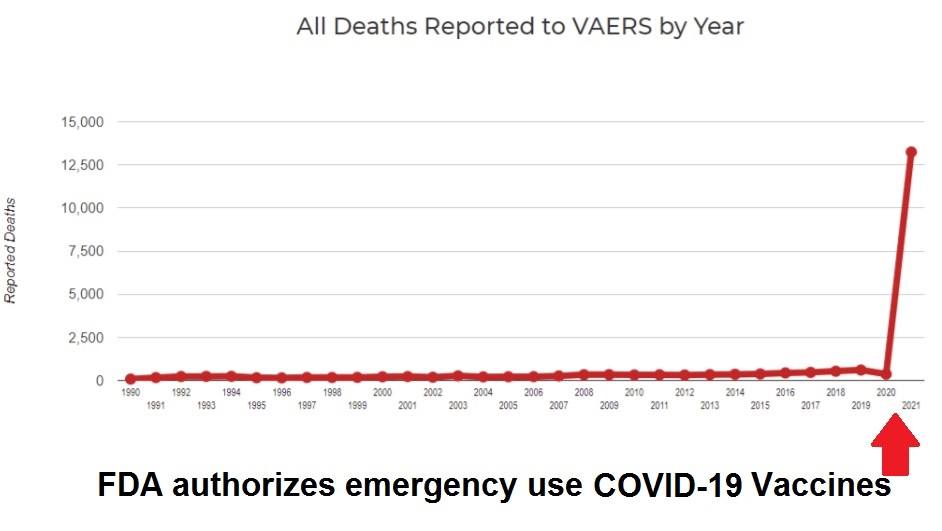
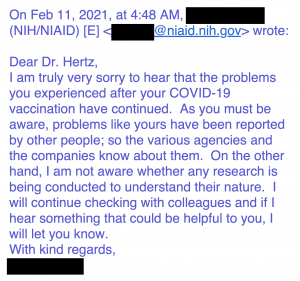
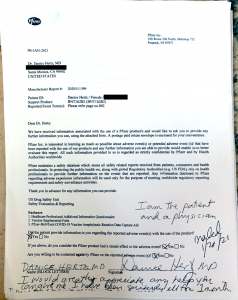










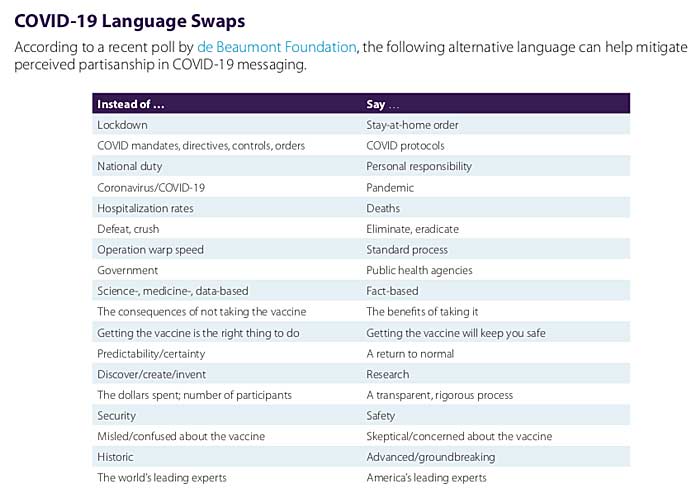

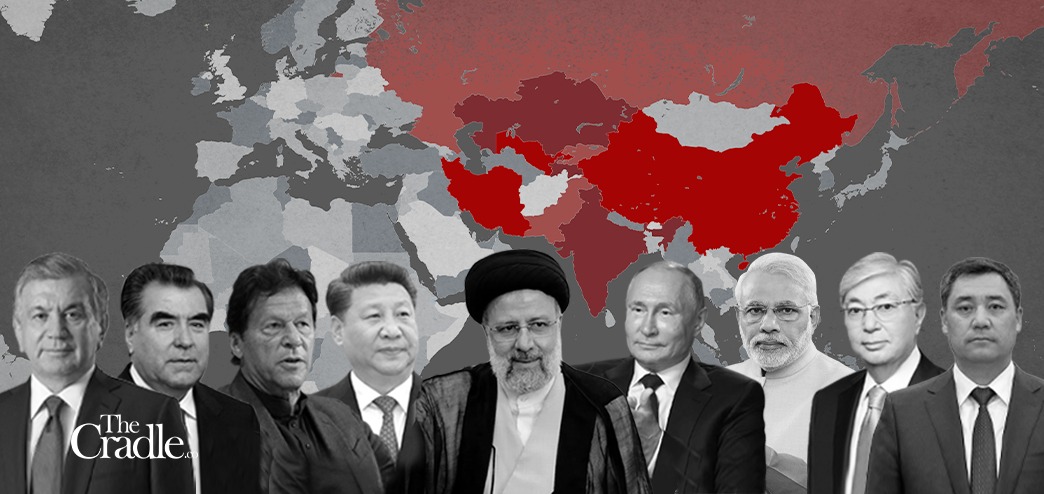



![Image [Heads of state Hafez al Assad, Muammar al-Qaddafi and Yasser Arafat during the 4th summit of the Steadfastness and Confrontation National Front, in Tripoli, April 12, 1980]](https://i1.wp.com/covertactionmagazine.com/wp-content/uploads/2021/09/image-heads-of-state-hafez-al-assad-muammar-al-q.jpeg?resize=696%2C466&ssl=1)









